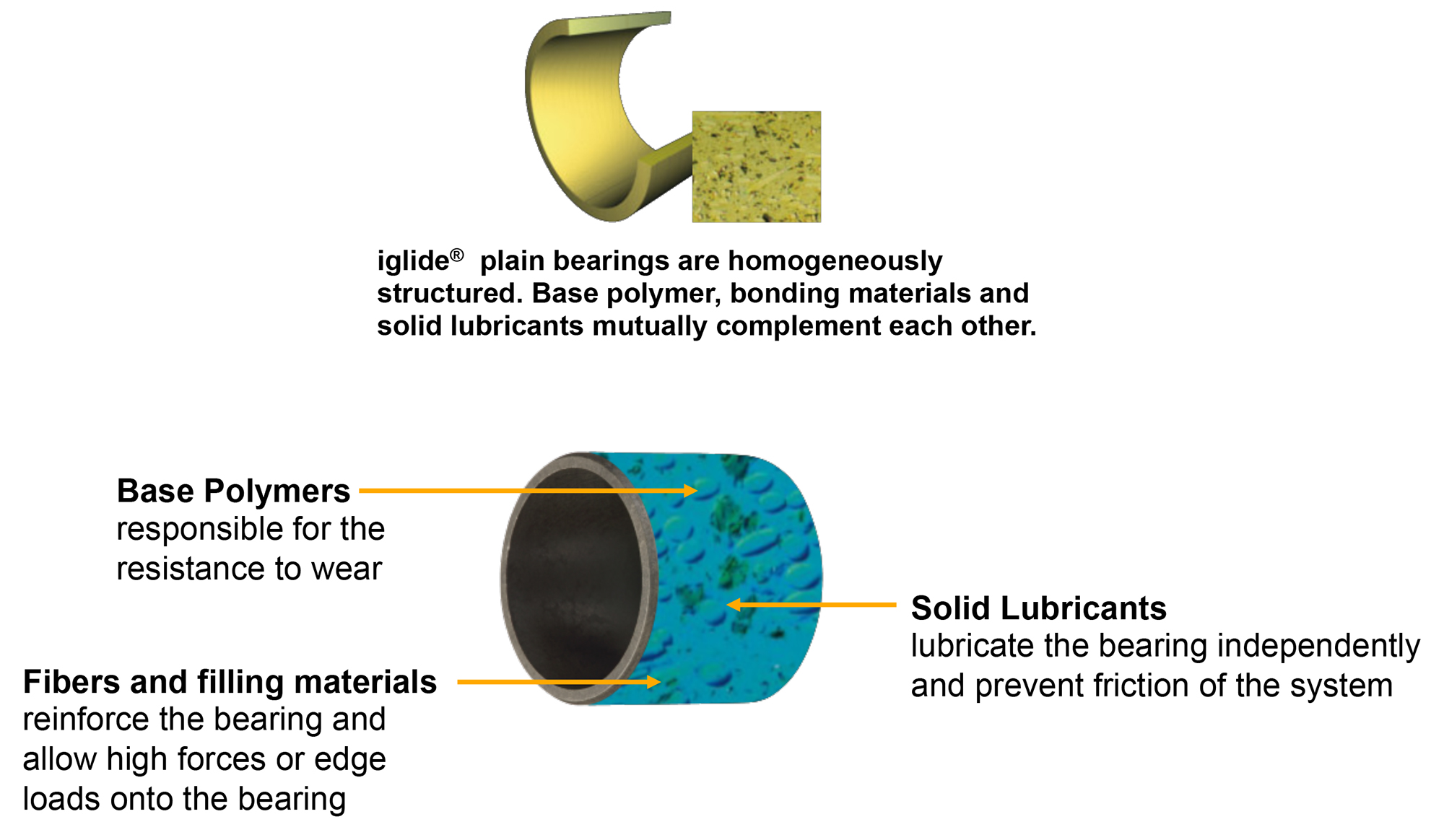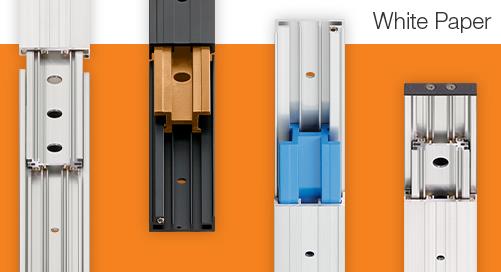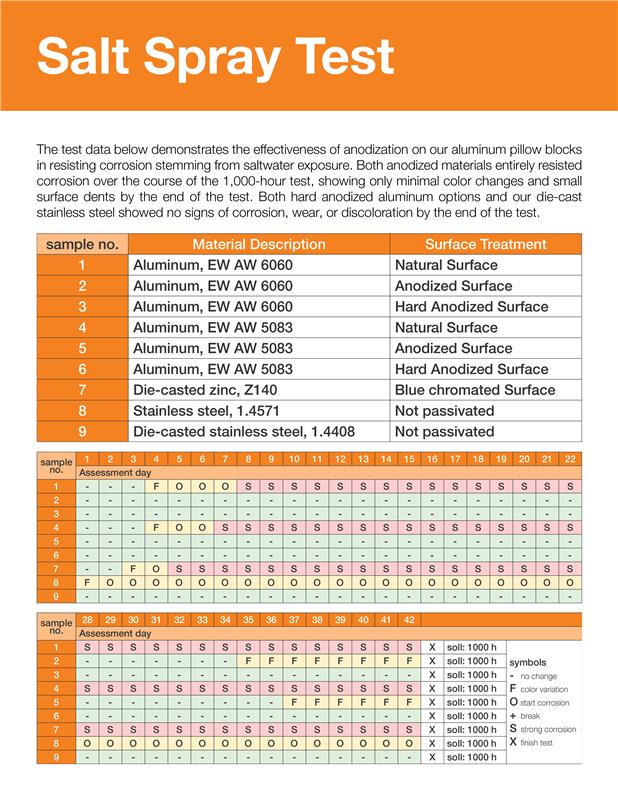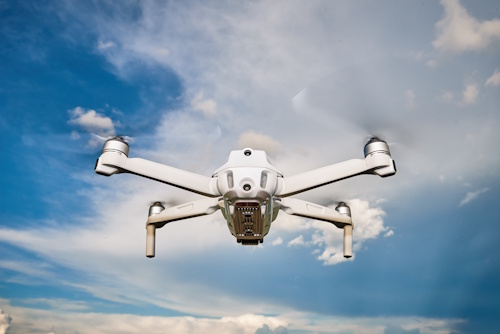How Do Plastic Linear Plain Bearings Work Without Lubrication?

Quick refresh: recirculating ball bearings & plastic plain bearings
Recirculating ball bearings involve a series of rolling elements that travel in a cage over another surface to help carry the load between two moving parts—both of which require lubrication, like oil or grease, to run at reduced frictions. Plastic plain bearings, although seemingly much more simple in design, are actually quite complex in their own right. Sure, they usually appear to be constructed of a single element that slides along a shaft or linear guide rail, but what is it in that plastic material that makes it all work so well? When I visit our customers, they are always very impressed by the low friction, and I often hear them say, “That’s really slick, slippery stuff!”, as a bearing goes flying off of a rail and takes them completely by surprise—then, they start to laugh at the fact that there aren’t a ton of tiny ball bearings to pick up off of the floor. Yes, plastic bearings like the ones from drylin® can do amazing things:- Achieve very high static loads.
- Travel at linear speeds of 3 m/s and even higher.
- All without oil or grease.
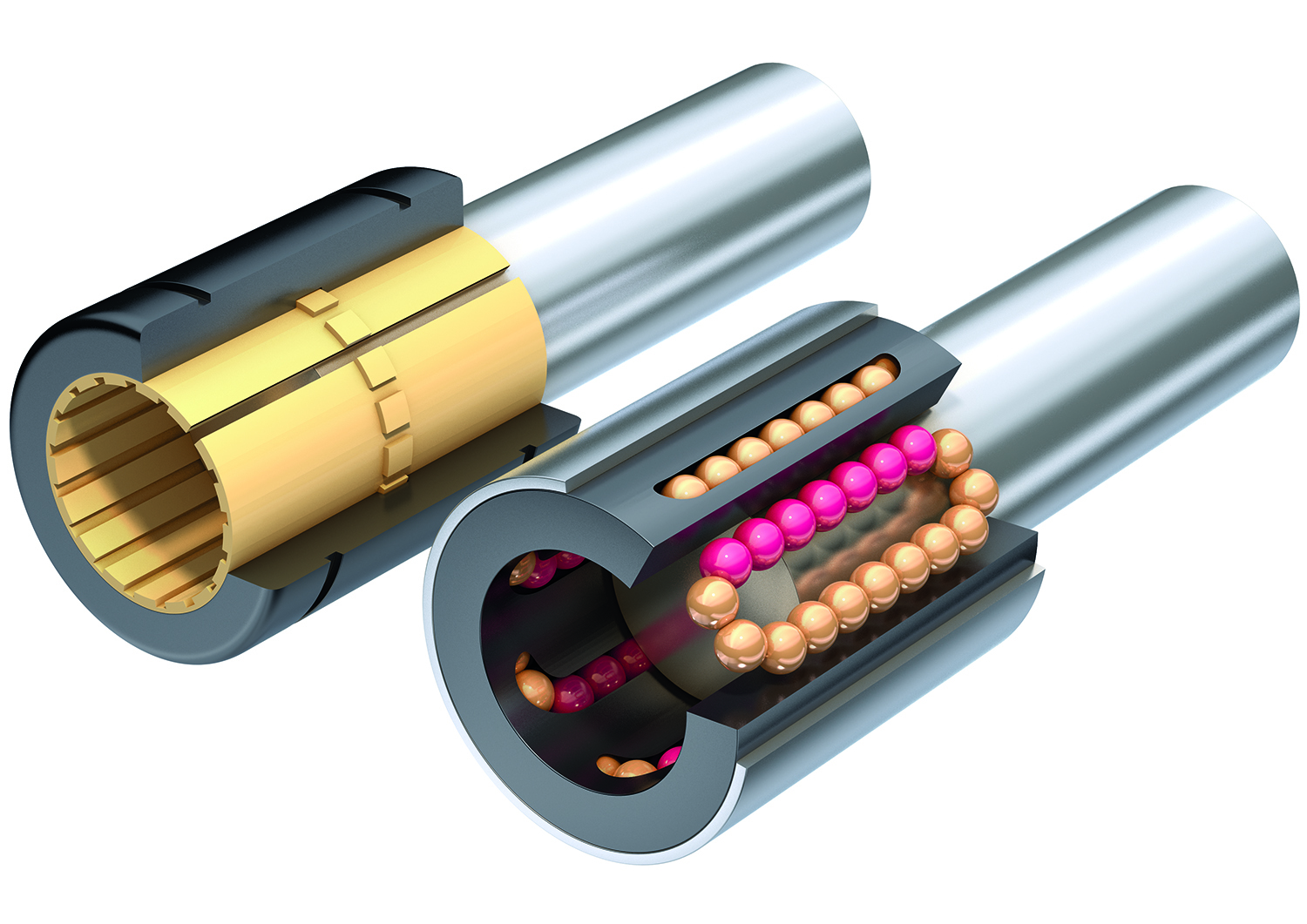
Drylin linear plain bearing on left vs. a recirculating ball bearing on right
But, how? I mean it’s just a small simple plastic piece, right?
Wrong—plastic bearings are anything but simple. They are produced from highly engineered tribopolymer materials that are rigorously tested over and over again, on multiple shaft/rail materials, and with multiple pressures at various velocities. They are not just generic, structural plastics dressed up for a masquerade party that's being hosted inside of your application. igus® linear plain bearings, use special bearing liners made from thermoplastic polymer materials. These polymer-based bearings use basic polymers that predetermine the general tribological, mechanical, thermic and chemical properties of the bearing, which are then combined with fibers and filling materials to provide the bearings with a high mechanical load capacity. Additionally, solid lubricants are embedded into the material to significantly optimize wear and friction. Essentially there are three core elements:- The base polymer material. This is the starting point and establishes the basic mechanical properties of the composite bearing—temperature limits, moisture absorption properties, and chemical resistances. Materials are not only chosen for their ‘general’ bearing qualities, but also for their specialized uses. For instance, we use FDA-compliant base materials when manufacturing bearings that will be used within food and drug applications, while we also offer other materials that are specifically designed for extreme temperatures and chemical-resistances like iglide T500/X, along with others that are specifically designed to work well on a specific shaft types, like J200 on aluminum shafting and E7 on steel and stainless materials. Although the base polymer is the main ingredient, it is not the only one
- Fibers and filling materials. These add strength and toughness to the polymer material base and can involve a range of different material types such as carbon and glass fibers, and glass beads, to name a few.
- Solid lubricants. The final part of the plastic plain bearing recipe requires the addition of solid lubrication elements into the system to lower the friction and to help reduce the wear. This improves the PV rating of the materials involved while giving you that ‘slippery’ feel we were talking about earlier.
